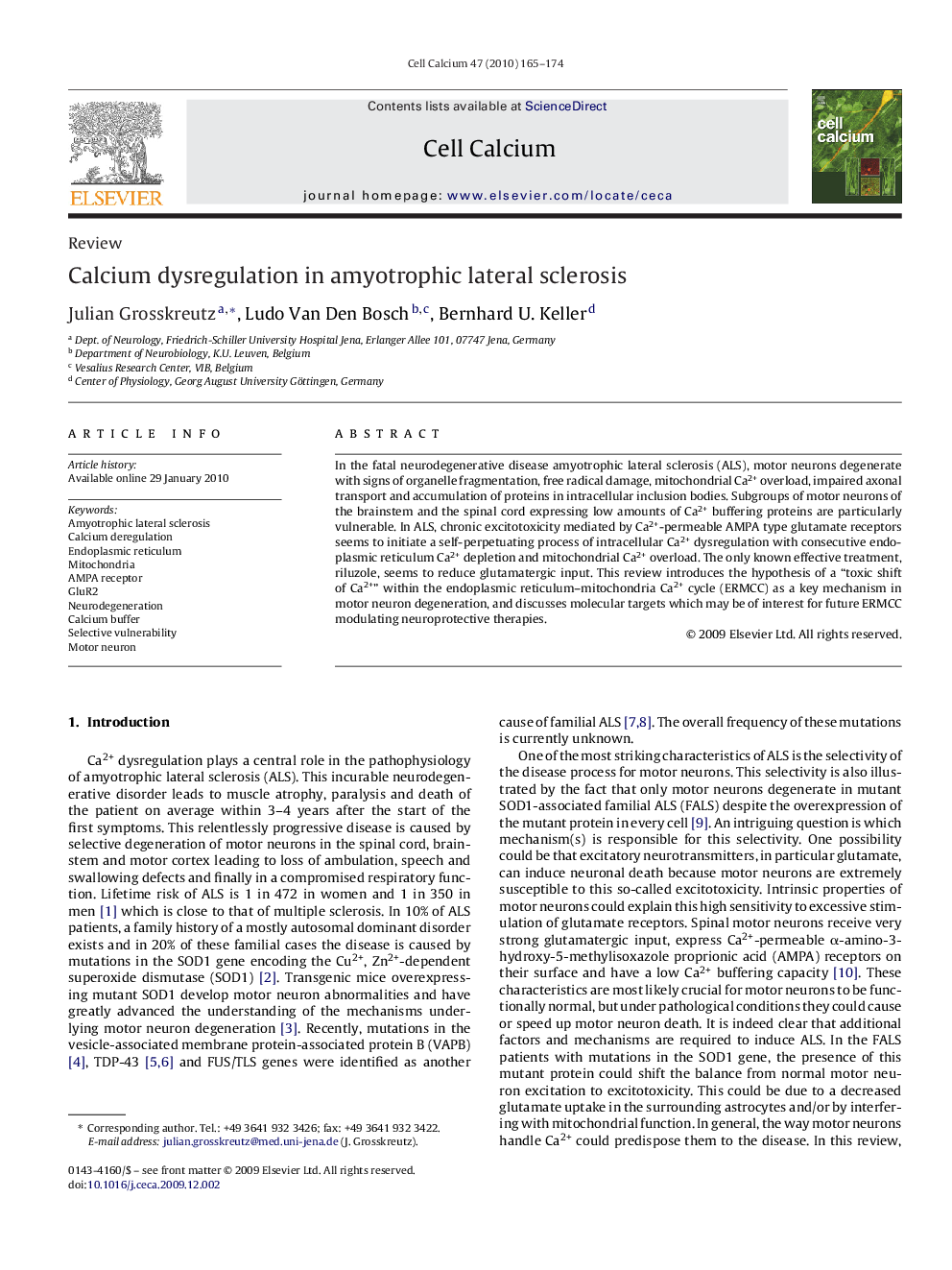| Article ID | Journal | Published Year | Pages | File Type |
|---|---|---|---|---|
| 2166346 | Cell Calcium | 2010 | 10 Pages |
In the fatal neurodegenerative disease amyotrophic lateral sclerosis (ALS), motor neurons degenerate with signs of organelle fragmentation, free radical damage, mitochondrial Ca2+ overload, impaired axonal transport and accumulation of proteins in intracellular inclusion bodies. Subgroups of motor neurons of the brainstem and the spinal cord expressing low amounts of Ca2+ buffering proteins are particularly vulnerable. In ALS, chronic excitotoxicity mediated by Ca2+-permeable AMPA type glutamate receptors seems to initiate a self-perpetuating process of intracellular Ca2+ dysregulation with consecutive endoplasmic reticulum Ca2+ depletion and mitochondrial Ca2+ overload. The only known effective treatment, riluzole, seems to reduce glutamatergic input. This review introduces the hypothesis of a “toxic shift of Ca2+” within the endoplasmic reticulum–mitochondria Ca2+ cycle (ERMCC) as a key mechanism in motor neuron degeneration, and discusses molecular targets which may be of interest for future ERMCC modulating neuroprotective therapies.
